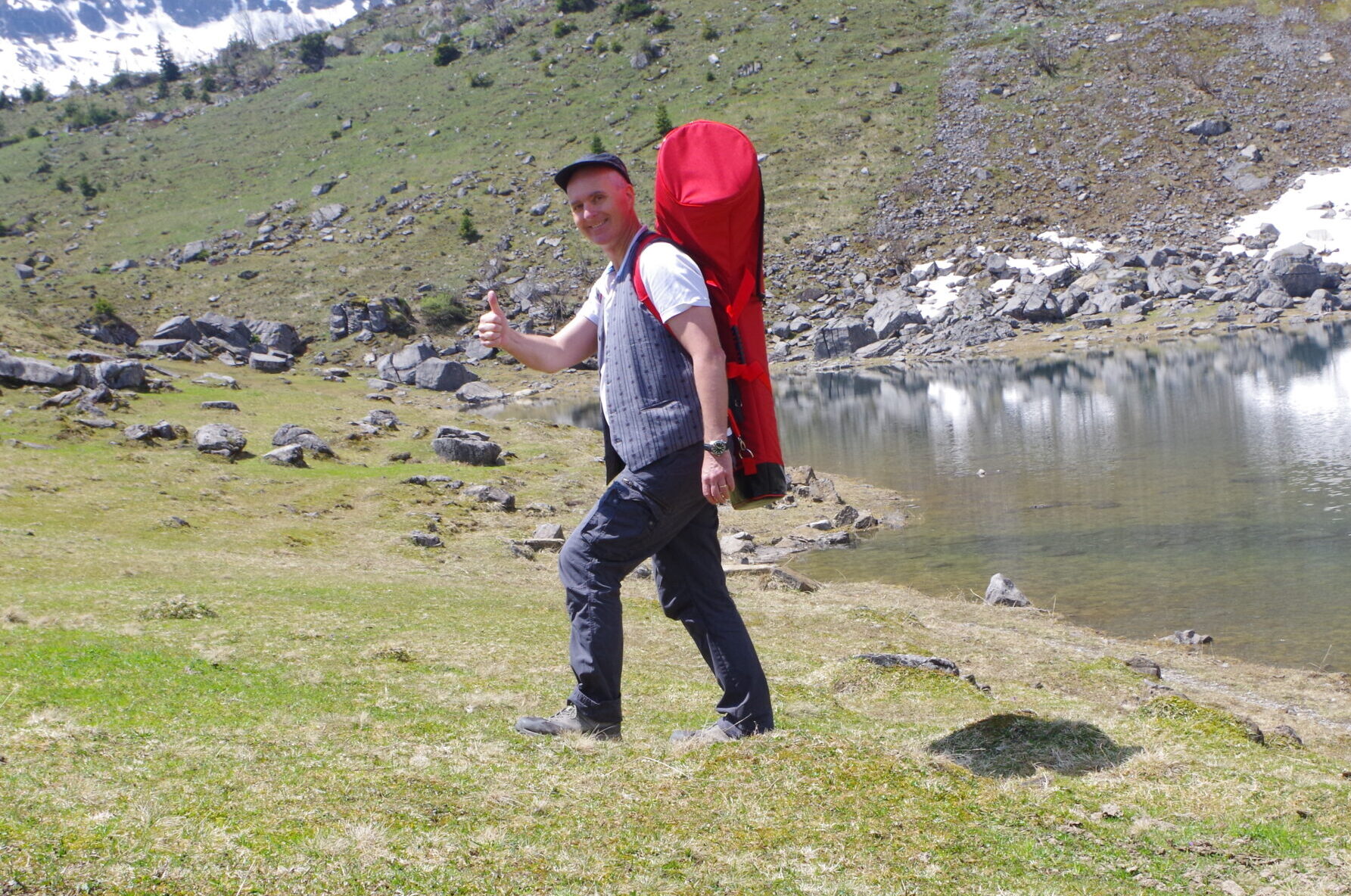Praktische Informationen

Typical question to the Büchel player: „Is this something similar to an alphorn?“ Counter question: „What do you mean by alphorn?“ Most people mean the approximately 3 1/2 meter long horn with the typically curved cup, ideally blown on a Swiss alp by a burly dairyman in full costume. Yes, then the Büchel is really „something similar”.
However, it is forgotten that the current form of the alphorn did not prevail until the 20th century. Previously, the wooden shepherd’s horns in the Alps – as elsewhere in Europe – had a wide variety of shapes. As late as the 1930s, the then alphorn pope Alfred Leonz Gassmann spoke of two versions of the alphorn, the long „standard alphorn“ from the Bernese Oberland and the Büchel in Central Switzerland.
Today, the Muotathal in Schwyz is considered the centre of the Büchel tradition. The Büchel was almost forgotten at the end of the 20th century. It owes his revival to a large extent to musicians outside the Federal Yodelling Association (Alois Bucher, Hans Kennel, Balthasar Streiff).
With its curved shape, the Büchel resembles the baroque trumpet and the field trumpet / fanfare. The English bugle also has almost the same name. Bugle is said to derive from the French cor buglèr and bugelet, thus revealing an origin from the animal horn.We can only speculate about the linguistic connection to the word Büchel.

Militia Bugler (source: Wikipedia)
Compared to the alphorn, the Büchel is much more difficult to play.The tight tube and the coils require a very solid embouchure and a lot of strength. Its sound is centered, somewhat rough and garish. The traditional Muotathaler Büchelgsätzli are short and contain many jumps in tone and rhythmic breaks. They sound pretty weird at first – not music that you can enjoy relaxing on your couch at home.
More recently, people have tried to write sheet music for Büchel following the alphorn mainstream. However, the Büchel only develops its peculiar charm in the mountains, when its sharp tones – like the whistle of a marmot – merge with the echo from the steep rock faces into a magic soundscape.
On the alphorn and the Büchel you can only play certain notes: the natural scale. These tones are defined by simple physical laws in relation to the instrument. In the deepest okatave the natural scale has only one note, in the second octave two, in the third octave four, then eight. In notation, the sound material of the Büchel is limited to:

Most Büchel players will only use the notes in the white-shaded are. The notation also hides the fact that most of the notes are tuned differently compared to instruments commonly used today. To the unfamiliar ear, they sound off. But this is a question of perspective: the natural scale follows old laws of harmony, whose (forgotten) universal validity can give us goosebumps.
You find this interesting? Then join me on a private tour or check the current offer of open tours unter „Tickets“.
Contact
Benno Weber
Staubstrasse 1
8038 Zürich, Switzerland
Phone
+41 76 295 17 03
(also SMS, WhatsApp & Signal)
Seriously
UID: CHE-450.181.532
IBAN: CH19 0070 0110 0018 7372 7
